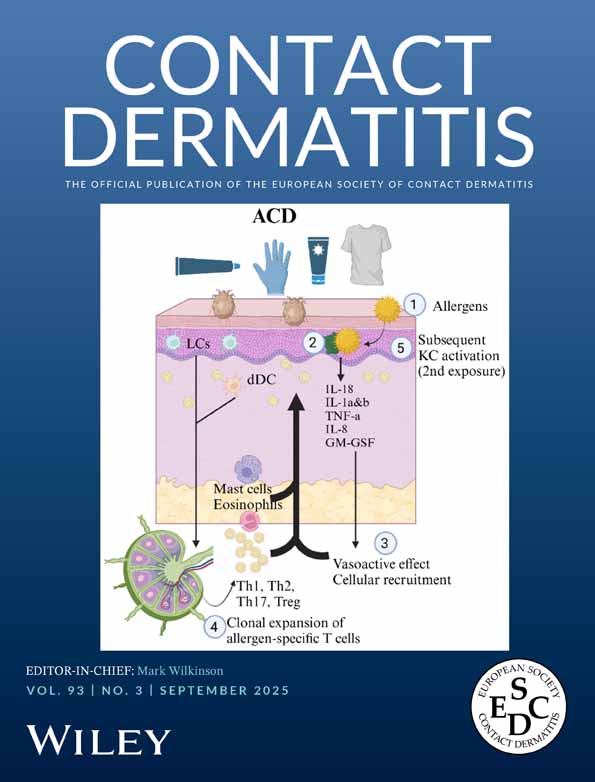Relevance of multiparametric skin bioengineering in a prospectively-followed cohort of junior hairdressers
Abstract
There is conflicting evidence concerning predictors of individual susceptibility to develop irritant contact dermatitis in wet work. A cohort of initially 92 hairdresser apprentices was prospectively followed for 3 years. The association between anamnestic and clinical findings, and multiparametric skin bioengineering data (transepidermal water loss [TEWL], microcirculation, capacitance, pH, sebum, temperature) was investigated. The observation intervals were 3 months in the 1st year of training and 12 months thereafter. Of the 92 apprentices, 6 had already developed hand dermatitis on 1st examination, 20 dropped out or had occupational exposure longer than 7 weeks prior to investigation. Of the remaining 66 participants considered here, 19 (29%) developed moderate or severe dermatitis (“cases”), 32 minimal skin changes, 15 none within the observation period. Average incidence rate of hand dermatitis was 21.1 cases per 100 person years. Atopy score was not associated with the development of dermatitis, nor were the investigated basal bioengineering parameters, including TEWL, in a multivariable model. However, there was a significant increase in TEWL within the 1st year of training in presumptive “cases”. The aim to develop an objective and predictive instrumentary for pre-employment counselling in wet work, by a combination of (a) clinical and (b) relevant non-invasive bioengineering parameters, has not yet been accomplished. Skin-provocation tests employing bioengineering seem to be required. Notwithstanding, work-related monitoring of basal biophysical skin-functions may become useful in the secondary prevention of occupational dermatitis.




